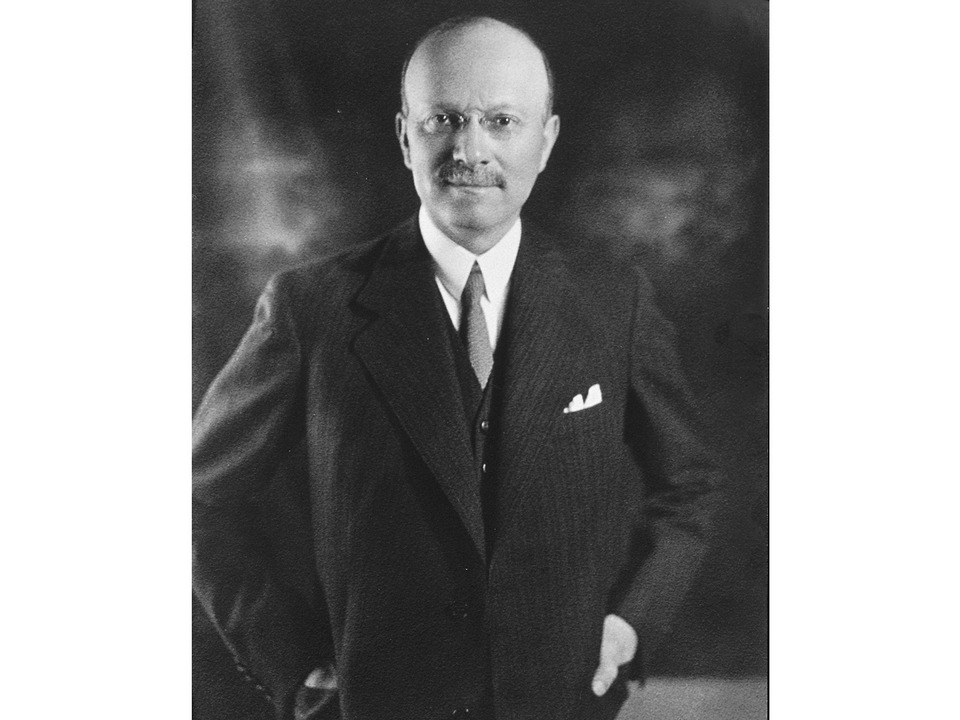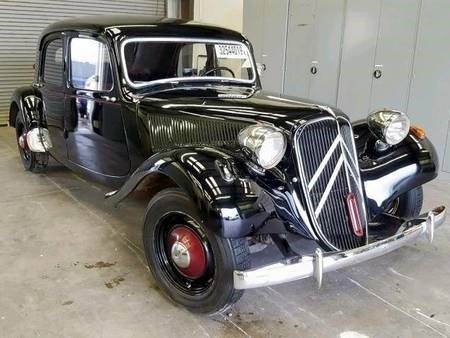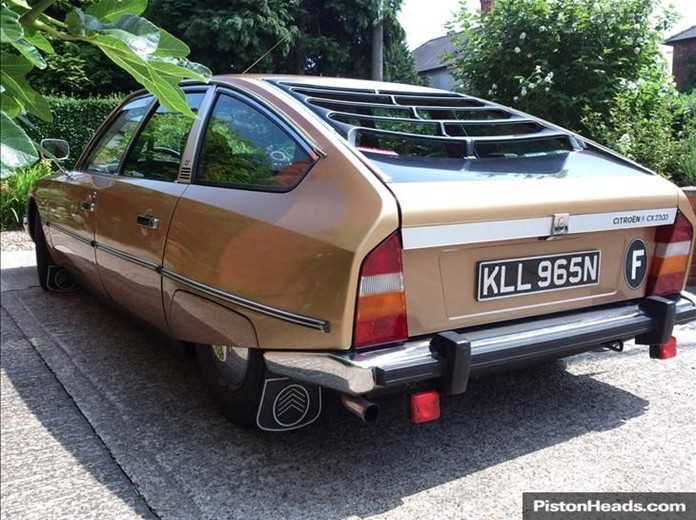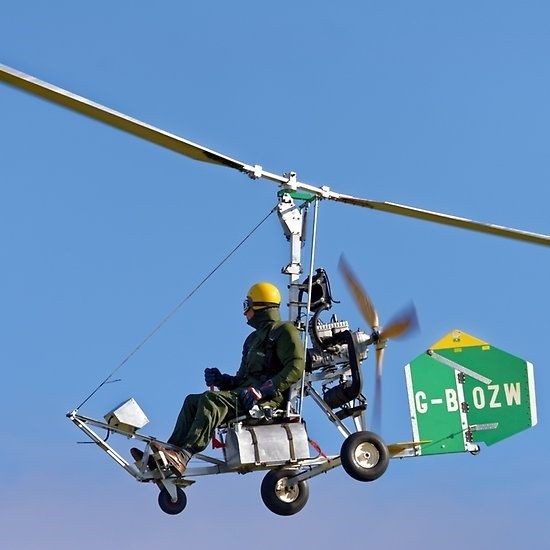
Hands up all those who have owned a Citroen. Hands up all those who have had problems with their Citroen. Just as I thought – 100 percent.
The entire history of Andre Citroen and his cars really is quite amazing. He began designing and building cars just over 100 years ago.
His first car, the type A of 1919 had a 1,323cmᶟ four-cylinder engine and with a top speed of 65kph, the Type A was very popular.
In 1924 Citroën presented the B10, the first car with an all-steel body, replacing the combined wood and metal bodywork. To demonstrate just how tough these vehicles were, Andre had two of them pushed over a cliff! They survived, and so did Andre.
To highlight the qualities of his half-track vehicles launched in 1922, André Citroën decided to send them across the Sahara desert. Georges-Marie Haardt and Louis Audouin-Dubreuil traveled from Touggourt to Timbuktu and back again between 17 December 1922 and 7 March 1923.
Building on the success of the Sahara crossing two years earlier, Citroën organised the Croisière Noire expedition. This crossed the African continent from north to south, travelling from Colomb-Béchar to Cape Town, between 28 October 1924 and 26 June1925.
The 1920’s were a busy time for Citroen, releasing the B14, a mass-market car with luxury features. It was one of the most popular vehicles in the inter-war period. The brand also presented the B15, the first French commercial vehicle with a closed cab. Citroën presented the B14, a mass-market car with luxury features. It was one of the most popular vehicles in the inter-war period.
In 1931 André Citroën returned from the US with lots of new ideas including the “floating-power” engine. He used this concept to once again contribute to modernizing the car. This innovative system (at the time) placed rubber mounts between the engine and chassis to reduce engine vibrations.
However, it was in 1934 that Citroen released the Traction Avant, setting the automotive industry on its ear. This established Citroen’s reputation for innovative technology. Citroën also presented the Type 7A, a car that blended innovation with safety, comfort and performance. It created a revolution in the automotive industry, with, for example: front-wheel drive, unitized all-steel body, hydraulic brakes on all four wheels, independent 4 wheel suspension with a torsion bar, the floating-power engine with overhead valves and removable cylinder liners.
Unfortunately, the launch of the Traction Avant did not resolve the serious financial difficulties facing the Citroen, which was unable to meet its financial commitments, despite being the leading vehicle manufacturer in France and Europe at this time, and world number two. The French government asked Michelin, the main creditor, to clear the company accounts and put the company back on a sound footing. Citroën continued to function under Michelin’s control, producing 50,000 cars each year.

Andre Citroen died 7 March 1935; however, Citroen as a manufacturer continues.
Over the next 40 years, Citroen produced some amazingly ugly body styles as well as different technology, but distinctly French.
In 1974, Michelin and the Peugeot group decide to merge Automobiles Citroën and Automobiles Peugeot to create a group with international reach.
Having owned a CX 1220 Club and a CX2200, despite the comfort, there were infuriating items such as the inboard disc brakes on the CX, which wore out in 3000 km and the pneumatic spheres which not only kept the car “afloat” but also powered the brakes. A message would appear on the dash which stated “Stop, brake failure”. (No message to tell you how to do it.)

Smoking in cars? Another risk factor?
I (a non-smoker) do not like riding in cars where the driver smokes. The smell permeates everything including the roof lining, and the hot embers burn holes in the upholstery. But those are not the real reason I dislike cigarette smoking in cars.
The real reason was spelled out by Dr Hilary Cass, the President of the Royal College of Paediatrics and Child Health (English spelling prevails as the college is very British), who said, “Levels of tobacco smoke in a car can be even higher than in a smoky bar and the effect on children can be serious, with second-hand smoke strongly linked to chest infections, asthma, ear problems and cot deaths. You can’t smoke in public places any more. It’s illegal to inflict your smoke on colleagues at work. So why should you be allowed to inflict it on passengers?”
However, it has been known for many years that children in smoking households suffer from more respiratory problems than the children from non-smoking households. “Thorax” the International Journal of Respiratory Medicine stated many years ago that “Previous reviews in this series have shown that parental smoking is associated with an increased incidence of acute lower respiratory illnesses, including wheezing illnesses, in the first one or two years of life.”
I think you should just accept that at face value, do your own ‘googling’ if you like, but undoubtedly cigarette smoke and children is not a good mix. With the details that levels of cigarette smoke in closed cars is higher than in smoky bars, this should ring some warning bells.
As I said at the beginning of this article, I do not try and push the message to adult smokers, so please do not give me a barrage of ‘hate mail’. However, if this item about kids and smoking in cars has hit a nerve, here is the truth on stopping smoking. The success rate really hangs on commitment.
So what is the best way? It’s called Cold Turkey. The proof is in the numbers. There has been enough research done and the prime factor is that the quitter has to be committed to the concept of becoming a non-smoker. Doing it (quitting) for somebody else, because you lost a bet, because you are being nagged into it by your wife, girlfriend, boyfriend is doomed to failure, I am afraid. This is something which requires your total commitment. 100 percent all the way.
Cold Turkey demands you stop immediately. Go through any withdrawals. Come out the other side as a non-smoker and you can stay that way for the rest of your life (and your children’s lives).
Is this the answer to congestion?
Many decades ago, while I was still at university I was given plans for a Bensen gyrocopter. I was immediately taken with the simplicity of the design and the fact that it was obvious that even a home engineer could build one of these contraptions. My day-dreams were all full of my going to uni and swooping down onto the lawns and stepping out with a flourish. My earth-bound class mates would be so jealous, I could almost taste it!

My day-dreams came to a close when I was informed by the civil aviation people in Australia that I would not be given a certificate of airworthiness, and if I ever did fly the thing, it had to be tethered to a car. The thought of being trundled to university behind a car did not have anywhere near the same mystique, and so my gyrocopter idea did not get off the ground, literally or metaphorically.
Now while Leonardo da Vinci has been credited with designing everything from the porta-loo to the helicopter, he did not design the gyrocopter. That was done by Spanish engineer Juan de la Cierva and the maiden flight was in 1923.
The name he gave it was an ‘Autogiro’ (Spanish) and since then it has also been known as an autogyro, gyroplane, gyrocopter, or rotaplane, and covers a type of rotorcraft which uses an un-powered rotor in autorotation to develop lift, and an engine-powered propeller, similar to that of a fixed-wing aircraft, to provide thrust. While similar to a helicopter rotor in appearance, the autogyro’s rotor must have air flowing through the rotor disc in order to generate rotation.
The term Autogiro became the trademark of the Cierva Autogiro Company, and the term Gyrocopter was used by E. Burke Wilford who developed the Reiseler Kreiser feathering rotor equipped gyroplane in the first half of the twentieth century. The name gyrocopter was later adopted as a trademark by Bensen Aircraft. It was one of these B-7M designs that I had stumbled across in 1958, with the motive power being the 1200 cc VW air-cooled engine. Alas, my one was still-born.
I would be interested to hear if any of the readers has experienced flights in a gyrocopter.
First published in Pattaya Mail on Jan. 23, 2020
 |
 |
 |





